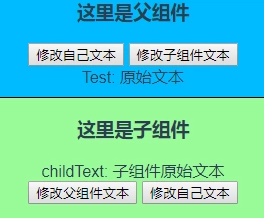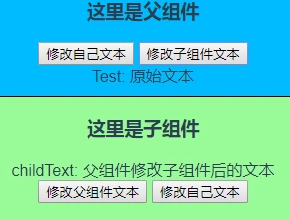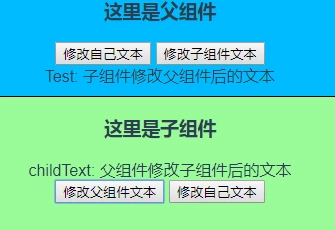1.生成基于vue的项目
基于vue-cli脚手架生成一个vue项目
常用npm命令:
npm i vue-vli -g vue --version vue init webpack 项目名
进入项目目录,使用npm run dev先试着跑一下。
一般不会出现问题,试跑成功后,就可以写我们的vuex程序了。
2.安装、使用 vuex
npm install vuex --save
2.1 state
紧接上一步 , 在 main.js 中加入 :
import vuex from 'vuex' Vue.use(vuex); var store = new vuex.Store({//store对象 state:{ show:false } })
再然后 , 在实例化 Vue对象时加入 store 对象 :
new Vue({ el: '#app', router, store,//使用store template: '<App/>', components: { App } })
完成到这一步 , 上述例子中的 $store.state.show 就可以使用了。
2.2 modules
前面为了方便 , 我们把 store 对象写在了 main.js 里面 , 但实际上为了便于日后的维护 , 我们分开写更好 , 我们在 src 目录下 , 新建一个 store 文件夹 , 然后在里面新建一个 index.js :
import Vue from 'vue' import vuex from 'vuex' Vue.use(vuex); export default new vuex.Store({ state:{ show:false } })
那么相应的 , 在 main.js 里的代码应该改成 :
//vuex import store from './store' new Vue({ el: '#app', router, store,//使用store template: '<App/>', components: { App } })
这样就把 store 分离出去了 , 那么还有一个问题是 : 这里 $store.state.show 无论哪个组件都可以使用 , 那组件多了之后 , 状态也多了 , 这么多状态都堆在 store 文件夹下的 index.js 不好维护怎么办 ?
我们可以使用 vuex 的 modules , 把 store 文件夹下的 index.js 改成 :
import Vue from 'vue' import vuex from 'vuex' Vue.use(vuex); import dialog_store from '../components/dialog_store.js';//引入某个store对象 export default new vuex.Store({ modules: { dialog: dialog_store } })
这里我们引用了一个 dialog_store.js , 在这个 js 文件里我们就可以单独写 dialog 组件的状态了 :
export default { state:{ show:false } }
做出这样的修改之后 , 我们将之前我们使用的 $store.state.show 统统改为 $store.state.dialog.show 即可。
如果还有其他的组件需要使用 vuex , 就新建一个对应的状态文件 , 然后将他们加入 store 文件夹下的 index.js 文件中的 modules 中。
modules: { dialog: dialog_store, other: other,//其他组件 }
2.3 mutations
前面我们提到的对话框例子 , 我们对vuex 的依赖仅仅只有一个 $store.state.dialog.show 一个状态 , 但是如果我们要进行一个操作 , 需要依赖很多很多个状态 , 那管理起来又麻烦了 !
mutations 登场 , 问题迎刃而解 :
export default { state:{//state show:false }, mutations:{ switch_dialog(state){//这里的state对应着上面这个state state.show = state.show?false:true; //你还可以在这里执行其他的操作改变state } } }
使用 mutations 后 , 原先我们的父组件可以改为 :
<template> <div id="app"> <a href="javascript:;" @click="$store.commit('switch_dialog')">点击</a> <t-dialog></t-dialog> </div> </template> <script> import dialog from './components/dialog.vue' export default { components:{ "t-dialog":dialog } } </script>
使用 $store.commit('switch_dialog') 来触发 mutations 中的 switch_dialog 方法。
这里需要注意的是:
mutations中的方法是不分组件的 , 假如你在 dialog_stroe.js 文件中的定义了switch_dialog方法 , 在其他文件中的一个switch_dialog方法 , 那么$store.commit('switch_dialog')会执行所有的switch_dialog方法。mutations里的操作必须是同步的。
你一定好奇 , 如果在 mutations 里执行异步操作会发生什么事情 , 实际上并不会发生什么奇怪的事情 , 只是官方推荐 , 不要在 mutationss 里执行异步操作而已。
2.4 actions
多个 state 的操作 , 使用 mutations 会来触发会比较好维护 , 那么需要执行多个 mutations 就需要用 action 了:
export default { state:{//state show:false }, mutations:{ switch_dialog(state){//这里的state对应着上面这个state state.show = state.show?false:true; //你还可以在这里执行其他的操作改变state } }, actions:{ switch_dialog(context){//这里的context和我们使用的$store拥有相同的对象和方法 context.commit('switch_dialog'); //你还可以在这里触发其他的mutations方法 }, } }
那么 , 在之前的父组件中 , 我们需要做修改 , 来触发 action 里的 switch_dialog 方法:
<template> <div id="app"> <a href="javascript:;" @click="$store.dispatch('switch_dialog')">点击</a> <t-dialog></t-dialog> </div> </template> <script> import dialog from './components/dialog.vue' export default { components:{ "t-dialog":dialog } } </script>
使用 $store.dispatch('switch_dialog') 来触发 action 中的 switch_dialog 方法。
官方推荐 , 将异步操作放在 action 中。
2.5 getters
getters 和 vue 中的 computed 类似 , 都是用来计算 state 然后生成新的数据 ( 状态 ) 的。
还是前面的例子 , 假如我们需要一个与状态 show 刚好相反的状态 , 使用 vue 中的 computed 可以这样算出来 :
computed(){ not_show(){ return !this.$store.state.dialog.show; } }
那么 , 如果很多很多个组件中都需要用到这个与 show 刚好相反的状态 , 那么我们需要写很多很多个 not_show , 使用 getters 就可以解决这种问题 :
export default { state:{//state show:false }, getters:{ not_show(state){//这里的state对应着上面这个state return !state.show; } }, mutations:{ switch_dialog(state){//这里的state对应着上面这个state state.show = state.show?false:true; //你还可以在这里执行其他的操作改变state } }, actions:{ switch_dialog(context){//这里的context和我们使用的$store拥有相同的对象和方法 context.commit('switch_dialog'); //你还可以在这里触发其他的mutations方法 }, } }
我们在组件中使用 $store.state.dialog.show 来获得状态 show , 类似的 , 我们可以使用 $store.getters.not_show 来获得状态 not_show 。
注意 : $store.getters.not_show 的值是不能直接修改的 , 需要对应的 state 发生变化才能修改。
mapState、mapGetters、mapActions
很多时候 , $store.state.dialog.show 、$store.dispatch('switch_dialog') 这种写法又长又臭 , 很不方便 , 我们没使用 vuex 的时候 , 获取一个状态只需要 this.show , 执行一个方法只需要 this.switch_dialog 就行了 , 使用 vuex 使写法变复杂了 ?
使用 mapState、mapGetters、mapActions 就不会这么复杂了。
以 mapState 为例 :
<template> <el-dialog :visible.sync="show"></el-dialog> </template> <script> import {mapState} from 'vuex'; export default { computed:{ //这里的三点叫做 : 扩展运算符 ...mapState({ show:state=>state.dialog.show }), } } </script>
相当于 :
<template> <el-dialog :visible.sync="show"></el-dialog> </template> <script> import {mapState} from 'vuex'; export default { computed:{ show(){ return this.$store.state.dialog.show; } } } </script>
mapGetters、mapActions 和 mapState 类似 , mapGetters 一般也写在 computed 中 , mapActions 一般写在 methods中。
下面为一个基于vue使用vuex的小案例:
先放效果图,初始化效果如下:

如果想通过父组件触发子组件的数据,就点“改变子组件文本”按钮,点击后效果如下:

如果想通过子组件修改父组件的数据,就在子组件点击“修改父组件文本”按钮,点击后效果如下:

代码文件介绍:
首先是Parent.vue组件
<template>
<div class="parent">
<h3>这里是父组件</h3>
<button type="button" @click="clickHandler">修改自己文本</button>
<button type="button" @click="clickHandler2">修改子组件文本</button>
<div>Test: {{msg}}</div>
<child></child>
</div>
</template>
<script>
import store from '../vuex'
import Child from './Child.vue'
export default {
computed: {
msg(){
return store.state.testMsg;
}
},
methods:{
clickHandler(){
store.commit('changeTestMsg', '父组件修改自己后的文本')
},
clickHandler2(){
store.commit('changeChildText', '父组件修改子组件后的文本')
}
},
components:{
'child': Child
},
store,
}
</script>
<style scoped>
.parent{
background-color: #00BBFF;
height: 400px;
}
</style>
下面是Child.vue子组件
<template>
<div class="child">
<h3>这里是子组件</h3>
<div>childText: {{msg}}</div>
<button type="button" @click="clickHandler">修改父组件文本</button>
<button type="button" @click="clickHandler2">修改自己文本</button>
</div>
</template>
<script>
import store from '../vuex'
export default {
name: "Child",
computed:{
msg(){
return store.state.childText;
}
},
methods: {
clickHandler(){
store.commit("changeTestMsg", "子组件修改父组件后的文本");
},
clickHandler2(){
store.commit("changeChildText", "子组件修改自己后的文本");
}
},
store
}
</script>
<style scoped>
.child{
background-color: palegreen;
border:1px solid black;
height:200px;
margin:10px;
}
</style>
最后是vuex的配置文件
import Vue from 'vue' import Vuex from 'vuex'; Vue.use(Vuex) const state = { testMsg: '原始文本', childText:"子组件原始文本" } const mutations = { changeTestMsg(state, str){ state.testMsg = str; }, changeChildText(state, str){ state.childText = str; } } const store = new Vuex.Store({ state: state, mutations: mutations }) export default store;